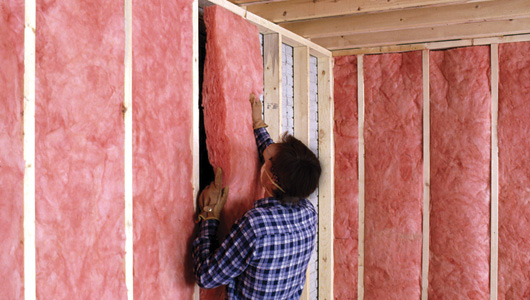Professionally Installed Wall Insualtion
Insulate Your Interior or Exterior Walls Properly

Wall Insulation Can Reduce Your Heating & Cooling Costs
One of the best ways to make sure your home is as energy efficient as possible is to make sure your walls are properly insulated. Many older homes have little or no exterior wall insulation which results in higher energy bills. While adding insulation to your exterior walls can be a a difficult job, it can also yield significant savings on your monthly energy bills and make your home more comfortable.
The first thing you need to do is determine how much insulation your walls currently have. We do this by using thermal imaging cameras to measure the temperature of your exterior walls. If there is no insulation present you can have one of our highly trained, professional installers blow insulation in through small holes drilled through the outside of your walls. These holes can then be filled and painted to match the exterior. Another alternative is to add exterior wall insulation to your home before you reside it. If your considering new siding, that is the perfect time to add insulation to your exterior walls.
Adding Wall Insulation to Your Home
In addition to insulating your exterior walls you should also consider adding insulation to any walls between your living space and unconditioned areas of your home like garages or attics. If you doing a room addition, finishing a previously unfinished area of your home or remodeling a room, you should take the extra time to make sure your exterior walls are properly insulated. It will make your new space more comfortable and more energy efficient.
If you want to add wall insulation to newly renovated spaces when the wall cavity is already exposed then you want to use fiberglass batt insulation. While installing batt insulation seems like a simple process, it's important to make sure that the fiberglass insulation batts are properly installed. Improperly installed wall insulation can result poor performance and a less efficient space.
For walls that are already finished a retrofit application can be used. Typically, blown-in insulation is used when the wall cavities are fully enclosed. These materials include loose fill fiberglass or cellulose insulation and many different types of spray foam applications. Any type of insulation is better then no insulation but spray foam provides better thermal performance because it fills into the holes and gaps in your wall which often results in higher R-values and a more comfortable living space.
If you are thinking about adding insulation to your interior or exterior walls you should consider contacting a BPI certified insulation contractor. A BPI certified contractor can assess your current insulation needs and make common sense recommendation to maximize your insulation return on investment.
Ready to Begin?